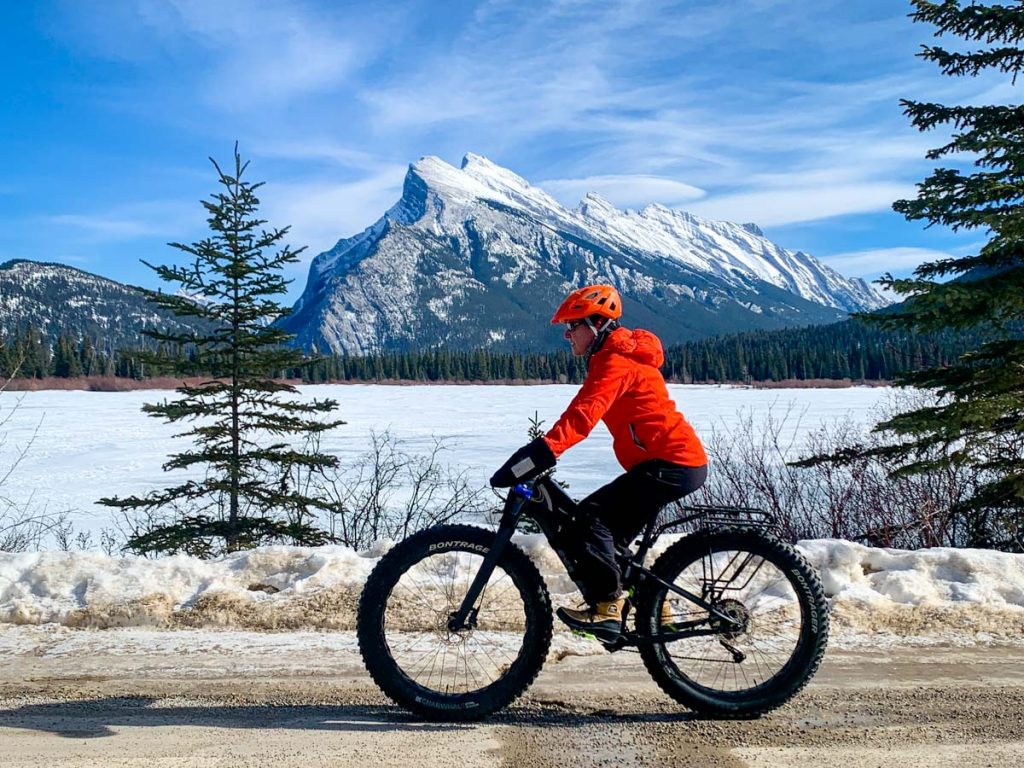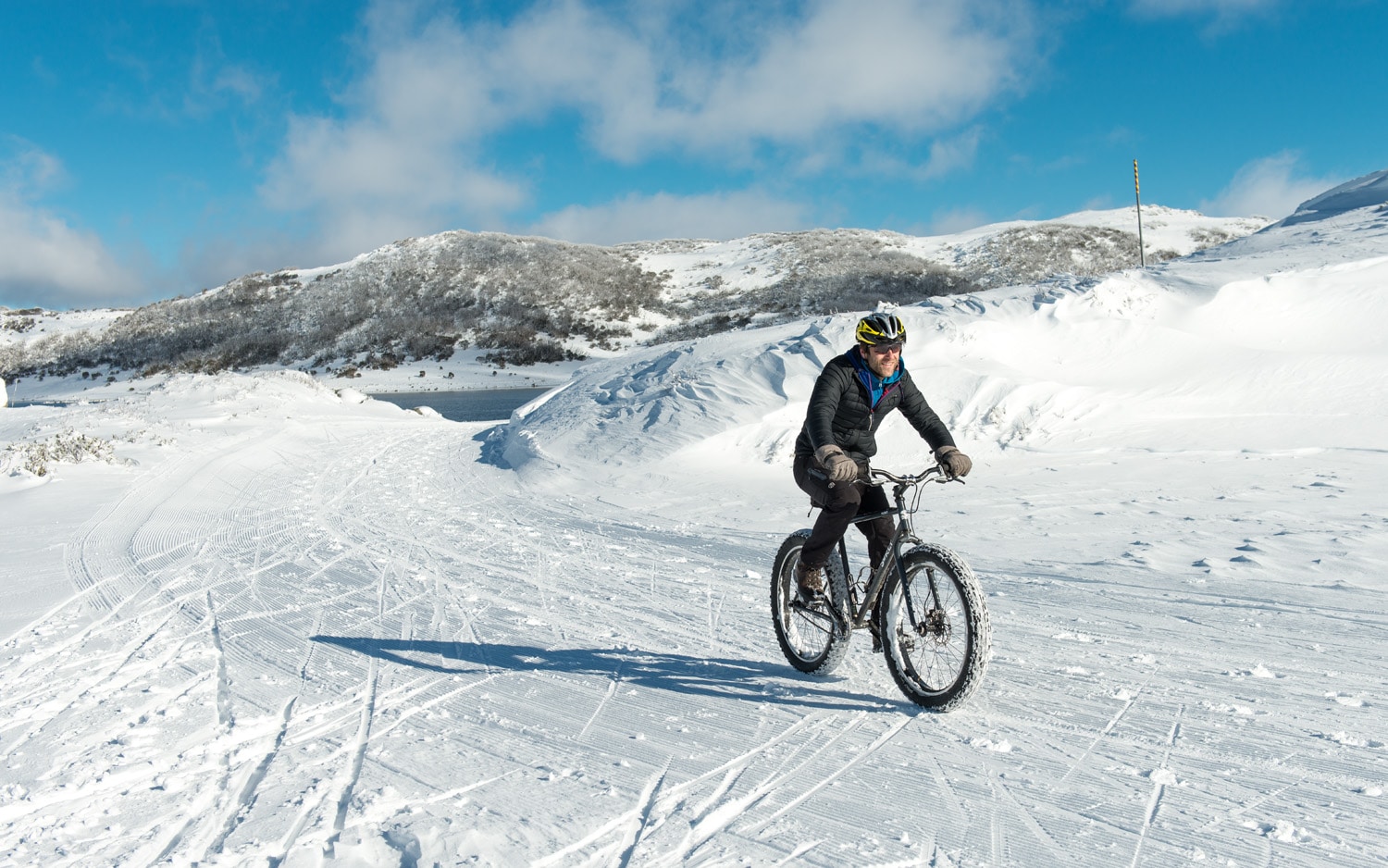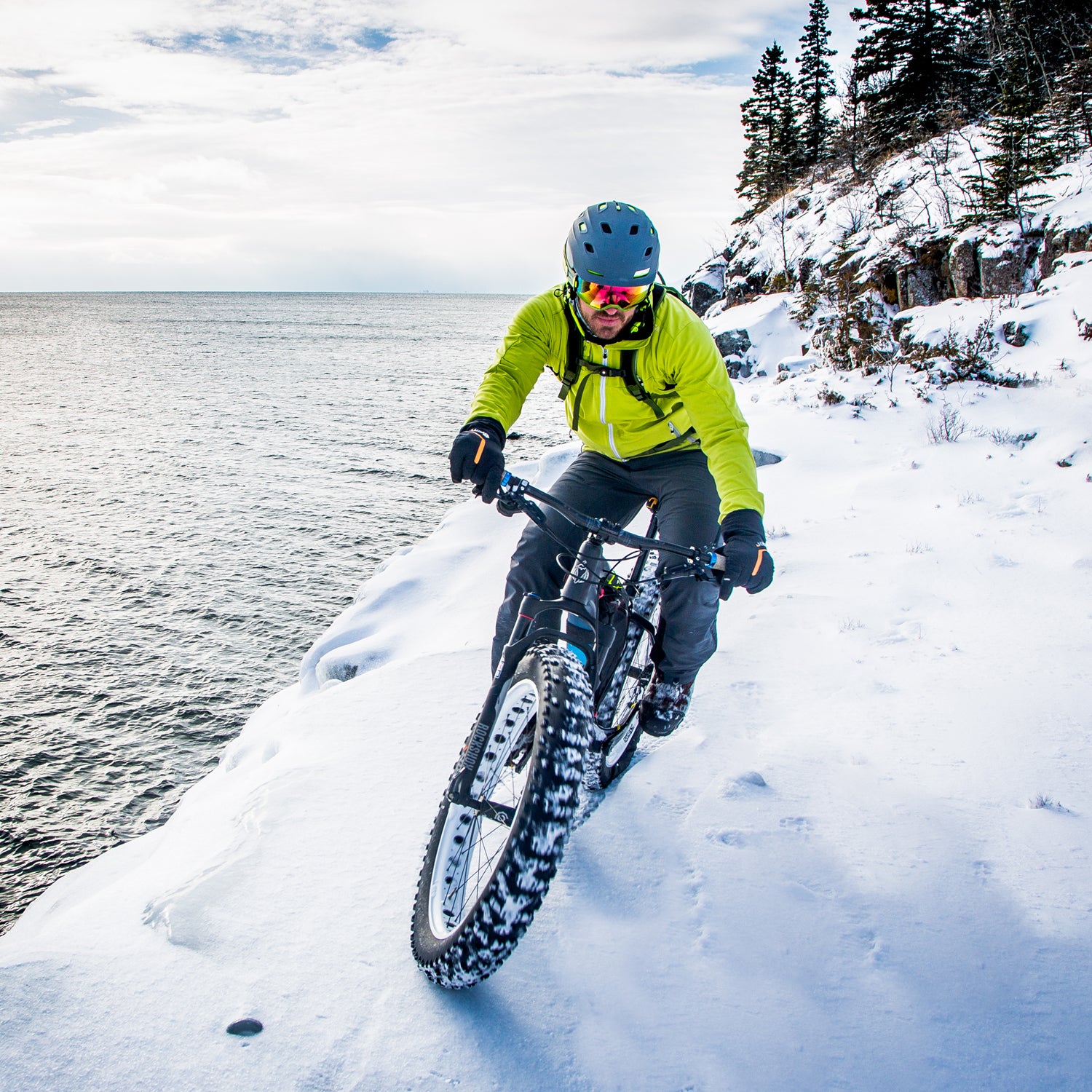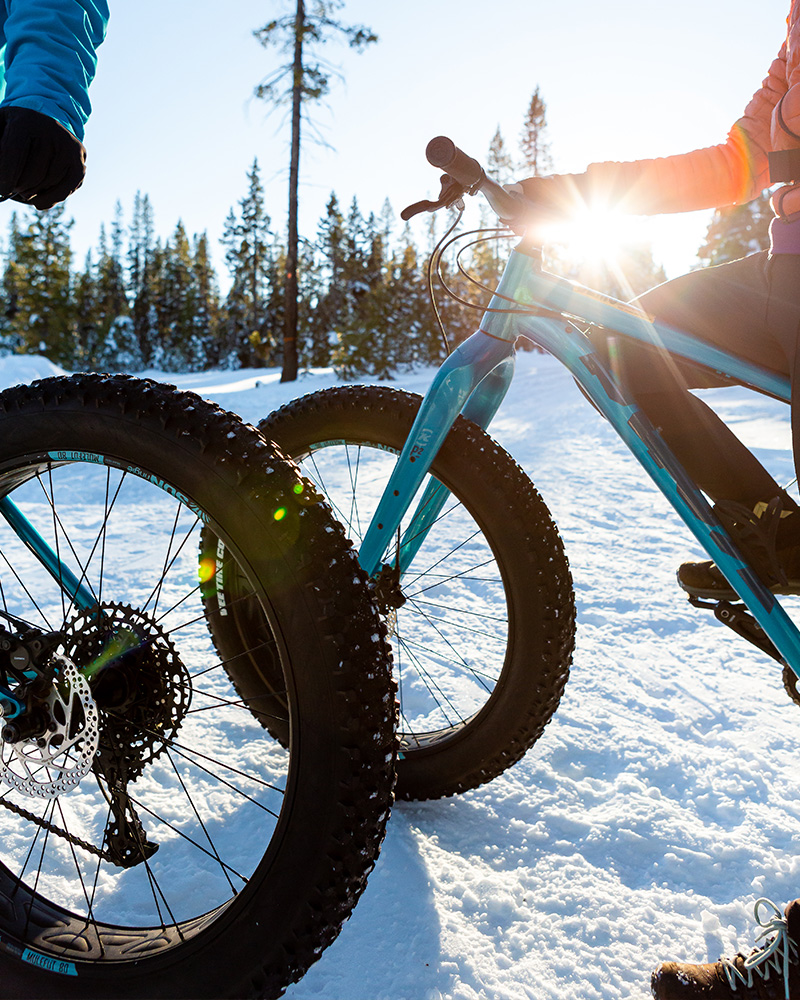What is Fat Biking and How Does it Work?
Fat biking is a type of cycling that involves riding a specially designed bicycle with oversized tires, typically 3.8 inches or wider, on snow-covered or sandy terrain. This unique style of cycling has gained popularity in recent years, particularly among outdoor enthusiasts and adventure-seekers. But what exactly is fat biking, and how does it work?
The concept of fat biking originated in Alaska in the 1980s, where cyclists began experimenting with wider tires to ride on snowy trails. The idea quickly gained traction, and today, fat biking is enjoyed by riders all over the world. The key to fat biking lies in the design of the bike itself, which features a sturdy frame, wide tires, and a low gear ratio. This combination allows riders to navigate challenging terrain with ease, including snow, sand, and mud.
So, what makes fat biking so special? For starters, the oversized tires provide incredible traction and stability, allowing riders to corner and brake with confidence. The low gear ratio also makes it easier to pedal through challenging terrain, reducing the risk of fatigue and injury. Additionally, fat biking provides a unique workout, engaging the core and leg muscles in ways that traditional cycling does not.
As the sport continues to grow in popularity, manufacturers are responding with a wide range of fat bike models, each designed to meet the specific needs of riders. From entry-level bikes to high-performance machines, there’s a fat bike out there for everyone. Whether you’re a seasoned cyclist or just looking for a new adventure, fat biking is definitely worth considering.
So, what is fat biking? In short, it’s a fun and exciting way to experience the great outdoors, regardless of the season. With its unique combination of oversized tires, sturdy frames, and low gear ratios, fat biking provides a thrilling workout and a new perspective on the world around us. Whether you’re riding through snowy landscapes or sandy dunes, fat biking is an adventure you won’t want to miss.
How to Choose the Right Fat Bike for Your Winter Adventures
With the growing popularity of fat biking, there are now more options than ever when it comes to choosing the right bike for your winter adventures. But with so many models and brands available, it can be overwhelming to decide which one is right for you. In this section, we’ll provide you with some tips and advice on how to select the perfect fat bike for your needs.
One of the most important factors to consider when choosing a fat bike is the tire size. Fat bikes typically come with tires ranging from 3.8 to 5 inches in width, with some models featuring even wider tires. The wider the tire, the more floatation and traction you’ll get in snowy conditions. However, wider tires can also make the bike more difficult to maneuver on tight trails. Consider the type of terrain you’ll be riding on most often and choose a tire size that suits your needs.
Another important factor to consider is the gear ratio. Fat bikes often feature a wide-range cassette and a single-chainring crankset, which provides a wide range of gears for tackling varying terrain. Look for a bike with a gear ratio that suits your fitness level and the type of terrain you’ll be riding on. If you’re planning to ride in extremely hilly or mountainous terrain, look for a bike with a wider range of gears.
Brake type is also an important consideration when choosing a fat bike. Disc brakes are the most common type of brake found on fat bikes, and they provide excellent stopping power in wet and snowy conditions. However, some fat bikes may feature rim brakes, which can be less effective in wet conditions. Consider the type of terrain you’ll be riding on and choose a bike with brakes that suit your needs.
Some popular fat bike models to consider include the Surly Pugsley and the Trek Farley. The Surly Pugsley is a highly versatile bike that features a wide range of gears and a durable frame. The Trek Farley is a high-performance bike that features a lightweight frame and a wide range of gears. Both of these bikes are excellent options for anyone looking to get into fat biking.
Ultimately, the right fat bike for you will depend on your specific needs and preferences. Consider the type of terrain you’ll be riding on, your fitness level, and your budget when choosing a bike. With so many options available, you’re sure to find a fat bike that suits your needs and provides you with hours of fun and adventure on the trails.
The Benefits of Fat Biking: Why You Should Give it a Try
Fat biking is a unique and exciting way to experience the thrill of cycling in the winter months. But beyond the fun and adventure, fat biking also offers a range of benefits that can improve your physical and mental well-being. In this section, we’ll explore the advantages of fat biking and why you should give it a try.
One of the most significant benefits of fat biking is the improvement in balance and coordination. The oversized tires and specialized frames of fat bikes require riders to develop a new level of balance and control, which can be beneficial for overall cycling skills. Additionally, the low-speed nature of fat biking allows riders to focus on technique and develop muscle memory, leading to improved balance and coordination.
Fat biking is also an excellent way to increase calorie burn and improve cardiovascular fitness. The physical demands of fat biking, including the need to pedal through snow and navigate obstacles, require a high level of energy expenditure. This can lead to significant calorie burn and improvements in cardiovascular fitness, making fat biking an excellent addition to any winter fitness routine.
But the benefits of fat biking extend beyond the physical realm. The mental and emotional benefits of fat biking are just as significant, with many riders reporting improved mood and reduced stress levels. The peaceful and serene nature of winter landscapes, combined with the thrill of adventure and exploration, can be a powerful antidote to the stresses of modern life.
Don’t just take our word for it – many experienced fat bikers swear by the benefits of the sport. “Fat biking has been a game-changer for me,” says Sarah, a seasoned fat biker from Colorado. “It’s allowed me to experience the beauty of winter in a whole new way, and has improved my physical and mental health in ways I never thought possible.”
Whether you’re looking to improve your physical fitness, reduce stress and anxiety, or simply experience the thrill of winter adventure, fat biking is an excellent choice. With its unique combination of physical challenge and mental relaxation, fat biking is an activity that can be enjoyed by riders of all levels and backgrounds.
So why not give fat biking a try? With the right gear and a bit of practice, you can experience the many benefits of fat biking for yourself. Whether you’re a seasoned cyclist or just looking for a new adventure, fat biking is an excellent way to stay active, have fun, and experience the beauty of winter in a whole new way.
Getting Started with Fat Biking: Essential Gear and Accessories
Fat biking requires a unique set of gear and accessories to ensure a safe and enjoyable ride. In this section, we’ll outline the essential gear and accessories you’ll need to get started with fat biking.
Warm clothing is essential for fat biking, as the cold winter weather can quickly drain your body heat. Look for clothing that is breathable, moisture-wicking, and wind-resistant. Popular brands like Pearl Izumi and Castelli offer a range of warm and comfortable clothing options.
Gloves are another essential item for fat biking, as they provide grip, warmth, and protection for your hands. Look for gloves that are waterproof, breathable, and have a good grip on the handlebars. Brands like Specialized and Gore offer high-quality gloves that are designed specifically for fat biking.
Goggles are also a must-have for fat biking, as they protect your eyes from snow, wind, and debris. Look for goggles that are waterproof, fog-resistant, and have good ventilation. Brands like Smith and Oakley offer high-quality goggles that are designed specifically for fat biking.
Lights are also essential for fat biking, as they provide visibility and safety in low-light conditions. Look for lights that are bright, waterproof, and have a long battery life. Brands like NiteRider and Light & Motion offer high-quality lights that are designed specifically for fat biking.
In addition to these essential items, there are several other accessories that can enhance your fat biking experience. These include a helmet, knee and elbow pads, and a basic tool kit. A helmet is essential for safety, while knee and elbow pads provide additional protection in case of a fall. A basic tool kit should include items like a pump, tire levers, and a multi-tool.
When it comes to choosing the right gear and accessories for fat biking, it’s essential to consider your specific needs and preferences. Think about the type of terrain you’ll be riding on, the weather conditions, and your personal comfort level. By choosing the right gear and accessories, you can ensure a safe and enjoyable fat biking experience.
Some popular brands for fat biking gear and accessories include:
- Pearl Izumi: Known for their high-quality clothing and accessories.
- NiteRider: Offers a range of high-quality lights and accessories.
- Specialized: Provides high-quality gloves and other accessories.
- Gore: Offers high-quality clothing and accessories.
- Smith: Known for their high-quality goggles and accessories.
By investing in the right gear and accessories, you can ensure a safe and enjoyable fat biking experience. Remember to always choose gear and accessories that meet your specific needs and preferences, and don’t be afraid to ask for advice from experienced fat bikers.
Mastering the Art of Fat Biking: Tips and Techniques for Success
Fat biking is a unique and challenging sport that requires a combination of skill, strategy, and physical fitness. To master the art of fat biking, it’s essential to develop a range of techniques and skills that will help you navigate different terrain, handle obstacles, and maintain control in snowy conditions.
One of the most critical skills for fat biking is balance and coordination. Fat bikes are designed to be stable and maneuverable, but they can still be challenging to ride, especially in snowy or icy conditions. To improve your balance and coordination, practice riding on different types of terrain, including hills, trails, and obstacles.
Cornering is another essential skill for fat biking. To corner effectively, lean your body into the turn, keeping your weight centered over the bike. Use your body weight to steer the bike, rather than relying solely on the handlebars. Practice cornering on different types of terrain, including tight switchbacks and sweeping curves.
Braking is also critical for fat biking, especially in snowy or icy conditions. To brake effectively, use both the front and rear brakes, squeezing them gently to avoid locking up the wheels. Practice braking on different types of terrain, including hills and flat ground.
In addition to these technical skills, it’s also essential to develop a range of strategies for navigating different terrain and conditions. For example, when riding in deep snow, use a slow and steady approach, keeping your weight centered over the bike. When riding on icy terrain, use caution and slow down, as the bike can be more difficult to control.
Finally, it’s essential to stay relaxed and focused while fat biking. Keep your weight centered over the bike, and avoid making sudden movements or jerky turns. Stay alert and aware of your surroundings, including other riders, obstacles, and changing weather conditions.
Some popular techniques for fat biking include:
- The “snowplow” technique, which involves riding with your feet shoulder-width apart and your weight centered over the bike.
- The “countersteering” technique, which involves turning the handlebars in the opposite direction of the turn to initiate the turn.
- The “weight shift” technique, which involves shifting your weight to one side of the bike to initiate a turn or maintain balance.
By mastering these techniques and strategies, you can improve your skills and confidence on the bike, and enjoy the thrill of fat biking in a range of different conditions and terrain.
Exploring the World of Fat Biking: Popular Trails and Destinations
Fat biking is a global phenomenon, with enthusiasts riding on trails and terrain all over the world. From the snowy landscapes of Alaska to the mountains of Colorado, and from the forests of Quebec to the dunes of New Zealand, there are countless destinations and trails to explore on a fat bike.
One of the most popular fat biking destinations is Alaska, where riders can explore the vast wilderness and experience the thrill of riding on snow and ice. The state has numerous trails and routes, including the famous Iditarod Trail, which spans over 1,000 miles from Anchorage to Nome.
Colorado is another hotspot for fat biking, with its rugged mountains and scenic trails offering endless opportunities for adventure. The state has numerous fat bike-specific trails, including the popular Crested Butte trails, which offer stunning views of the surrounding mountains.
Quebec, Canada, is also a popular destination for fat biking, with its vast forests and rolling hills offering a unique and challenging riding experience. The province has numerous trails and routes, including the famous Route Verte, which spans over 5,000 kilometers from the US border to the Saguenay Fjord.
New Zealand is another country with a thriving fat biking scene, with its rugged terrain and stunning landscapes offering endless opportunities for adventure. The country has numerous trails and routes, including the popular Queenstown Trail, which offers stunning views of the surrounding mountains and Lake Wakatipu.
Some popular fat biking trails and destinations include:
- The Iditarod Trail, Alaska: A 1,000-mile trail that spans from Anchorage to Nome, offering stunning views of the Alaskan wilderness.
- The Crested Butte Trails, Colorado: A network of trails that offer stunning views of the surrounding mountains and valleys.
- The Route Verte, Quebec: A 5,000-kilometer trail that spans from the US border to the Saguenay Fjord, offering a unique and challenging riding experience.
- The Queenstown Trail, New Zealand: A trail that offers stunning views of the surrounding mountains and Lake Wakatipu.
These are just a few examples of the many amazing fat biking trails and destinations around the world. Whether you’re a seasoned rider or just starting out, there’s a trail or destination out there for you.
Staying Safe on the Trails: Fat Biking Safety Tips and Precautions
Fat biking can be a fun and exciting way to explore the outdoors, but it’s essential to prioritize safety when riding on trails and in snowy conditions. In this section, we’ll provide you with some valuable safety tips and precautions to help you stay safe on the trails.
Assessing trail conditions is crucial when fat biking. Before heading out, check the weather forecast and trail conditions to ensure that the trails are safe and rideable. Look for signs of recent snowfall, ice, or other hazards that could affect your ride.
Avoiding hazards is also essential when fat biking. Be aware of your surroundings and keep an eye out for obstacles such as rocks, trees, and wildlife. Use caution when approaching intersections or areas with limited visibility.
Responding to emergencies is also critical when fat biking. Always carry a basic tool kit and supplies, such as a first aid kit, spare tube, and pump. Know how to fix a flat tire and perform basic bike repairs.
Riding with a buddy is also a great way to stay safe on the trails. When riding with a partner, you can provide mutual support and assistance in case of an emergency.
Carrying basic tools and supplies is also essential when fat biking. Always carry a basic tool kit, spare tube, and pump, as well as a first aid kit and other emergency supplies.
Staying visible in low-light conditions is also critical when fat biking. Use lights and reflective gear to increase your visibility to other riders and trail users.
Some popular safety tips and precautions for fat biking include:
- Always wear a helmet and protective gear, such as gloves and goggles.
- Use caution when approaching intersections or areas with limited visibility.
- Carry a basic tool kit and supplies, such as a first aid kit, spare tube, and pump.
- Ride with a buddy whenever possible.
- Stay visible in low-light conditions by using lights and reflective gear.
By following these safety tips and precautions, you can help ensure a safe and enjoyable fat biking experience.
Joining the Fat Biking Community: Events, Clubs, and Online Forums
Fat biking is a community-driven sport, and joining the fat biking community can be a great way to connect with other riders, learn new skills, and stay up-to-date on the latest trends and technologies. In this section, we’ll provide you with some resources for finding fat biking groups and meetups in your area.
Local clubs are a great way to connect with other fat bikers in your area. Many cities and towns have fat biking clubs that organize group rides, events, and meetups. These clubs are a great way to meet other riders, learn new skills, and get involved in the local fat biking community.
Online forums are another great way to connect with other fat bikers. Websites like FatBike.com and MTBR.com have active forums where riders can share tips, ask questions, and discuss the latest trends and technologies.
Events like the Fat Bike World Championships are a great way to connect with other fat bikers and experience the thrill of competitive fat biking. The championships are held annually in different locations around the world and attract riders from all over the globe.
Some popular resources for finding fat biking groups and meetups include:
- FatBike.com: A website dedicated to fat biking, with a forum, event calendar, and resources for finding local fat biking groups.
- MTBR.com: A website dedicated to mountain biking, with a forum, event calendar, and resources for finding local fat biking groups.
- Meetup.com: A website that allows users to find and join local groups and meetups, including fat biking groups.
- Facebook Groups: Many local fat biking groups have Facebook groups where they organize events, share tips, and discuss the latest trends and technologies.
By joining the fat biking community, you can connect with other riders, learn new skills, and stay up-to-date on the latest trends and technologies. Whether you’re a seasoned rider or just starting out, there’s a place for you in the fat biking community.







